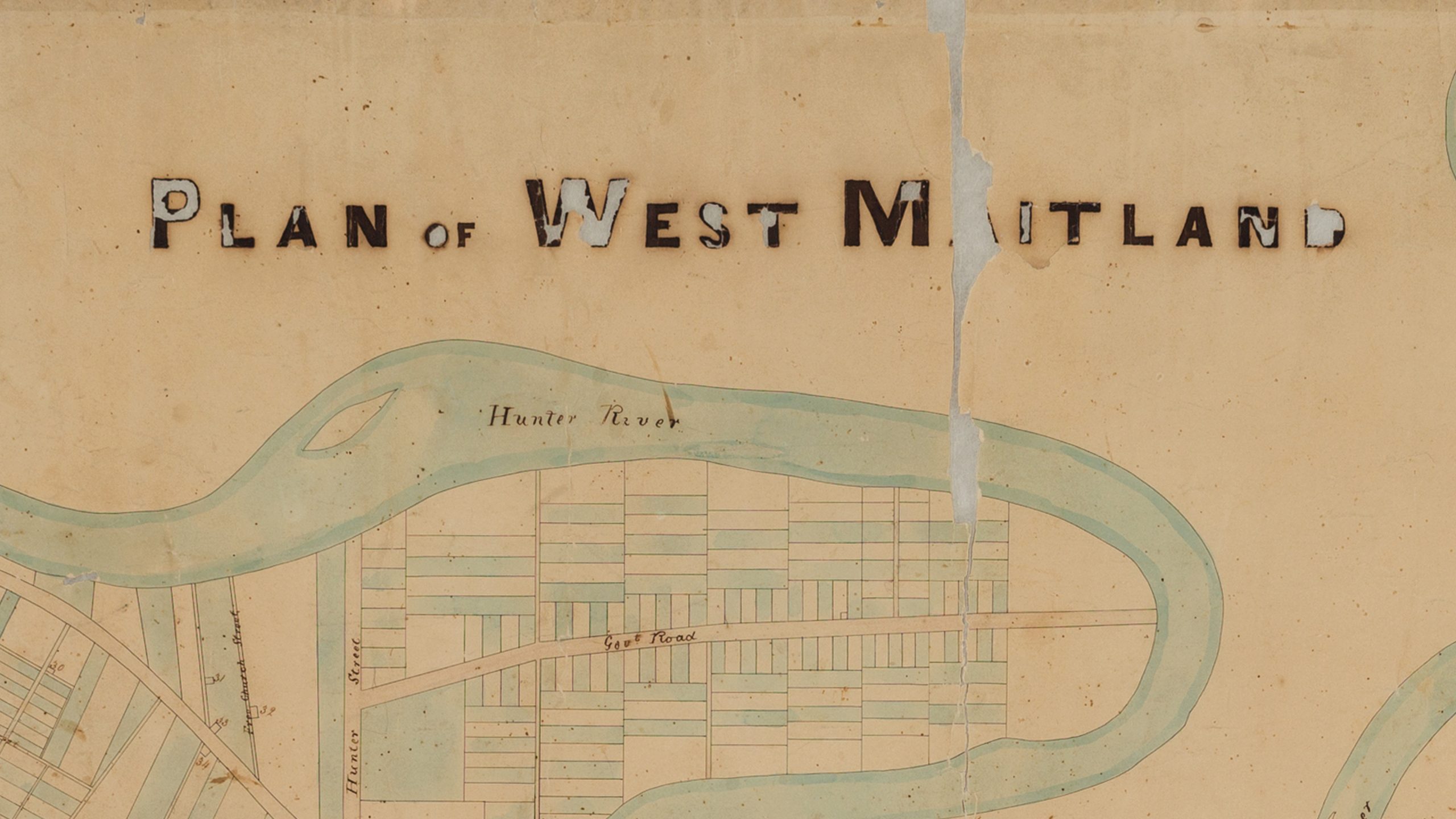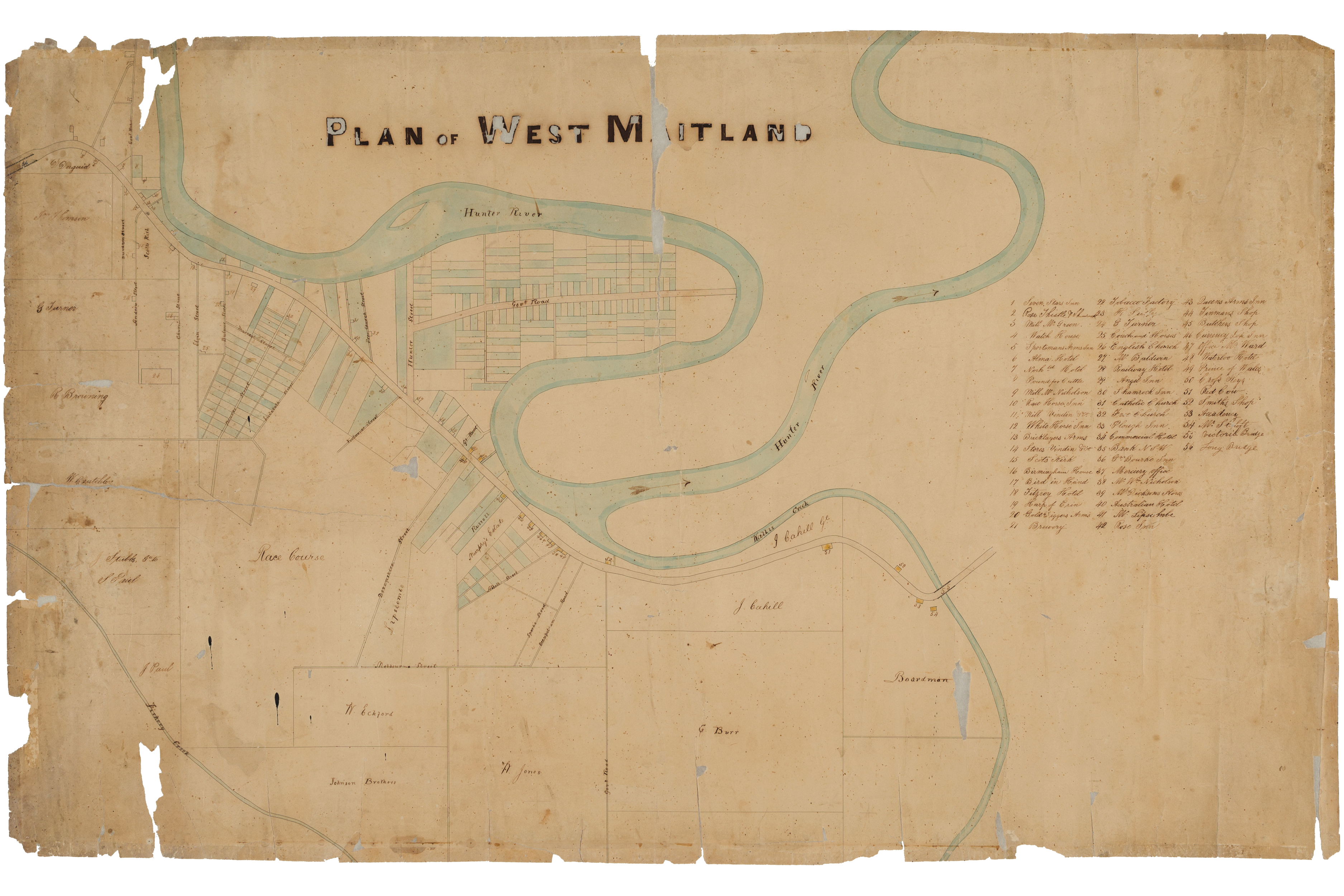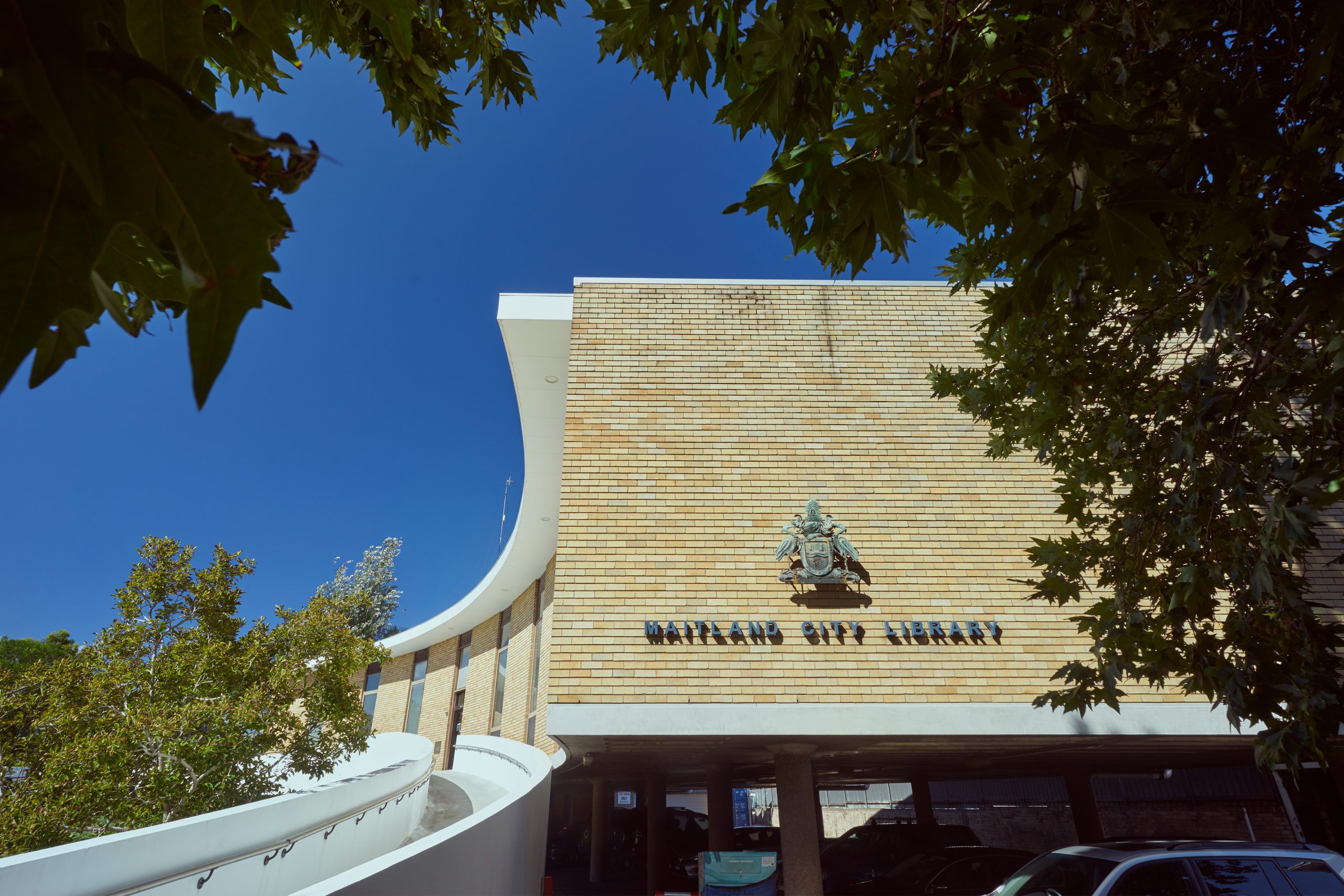Who, When and Why?
Uncovering Clues About an Early Maitland Plan
In the 2004 book Time gentlemen, please!: Maitland’s Hotels Past & Present, a redrawn copy of this old undated plan of West Maitland was published, with an estimate that it was drawn around, or at least represents, the year 1858. But what evidence places it in the 1850s?
For the Wonnarua people, the area depicted in the plan was known as bo-un, after a species of bird. Their ancestors had lived on the banks of Coquun (which the settlers later called the Hunter River) for thousands of years. But after Governor Macquarie visited in 1818, he called the area Wallis Plains, and allowed emancipated convicts to settle and establish farms on Wonnarua Country.
In the 1820s others were granted enormous land parcels, and their names are indicated on this plan. Some of them – Boardman, Burr, Eckford and Jones – were among those named in the 1835 proclamation when the original town of Maitland was divided in two – as West Maitland and East Maitland, across the river. At the lower right of the plan, we see the name ‘C. Burr’ – Catherine Burr was the widow of a veteran soldier, who had been granted this land parcel in March 1830, but sold it in 1834. Was the plan made then? The copperplate writing and hand drawing of the plan do seem to suggest an early nineteenth century date.
But those early settler-farmer names are incidental to the plan’s primary purpose anyway. The reference key listing the town’s pubs and businesses suggests its creator was mainly interested in those commercial enterprises. And it’s one of those pub names that offers a clue on the plan’s date – the ‘Gold Diggers Arms’. It was only after the official announcement of the discovery of gold in NSW in 1851 that this pub would have been so named.





